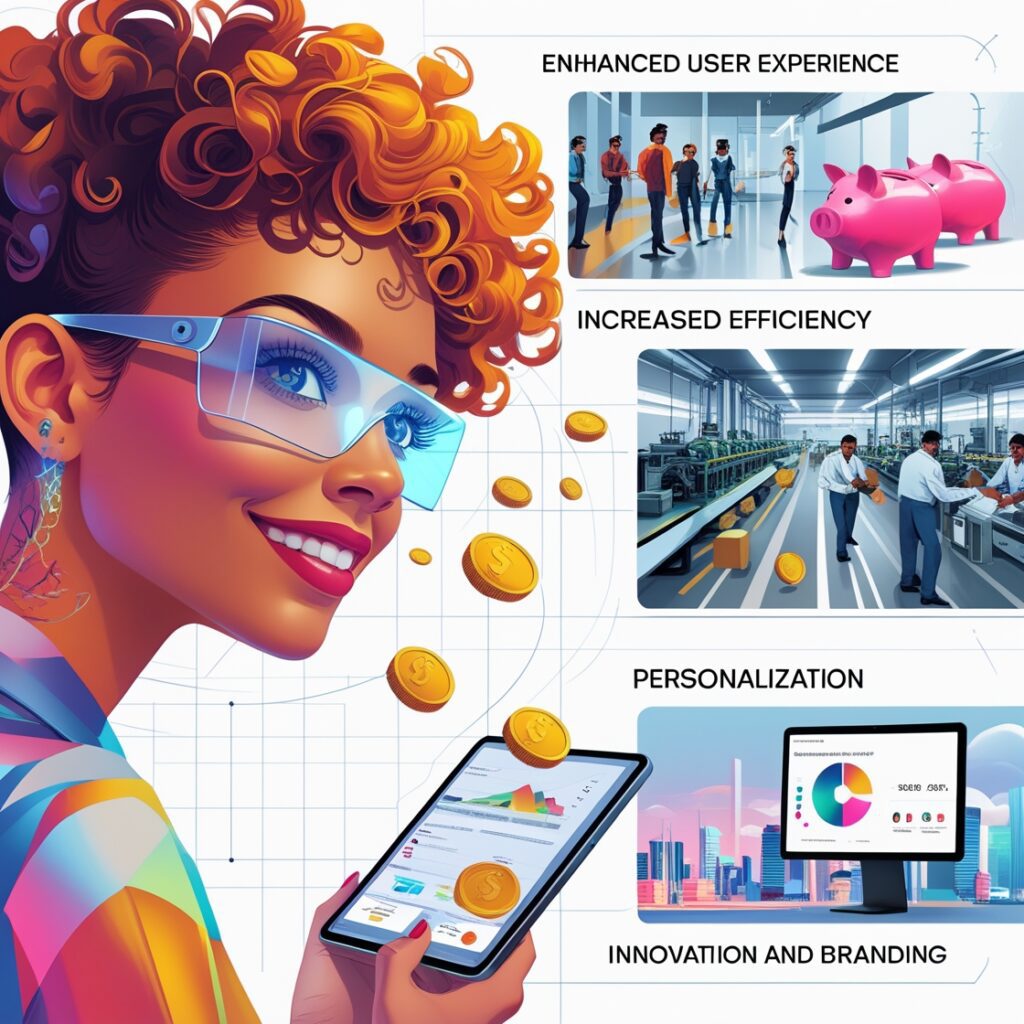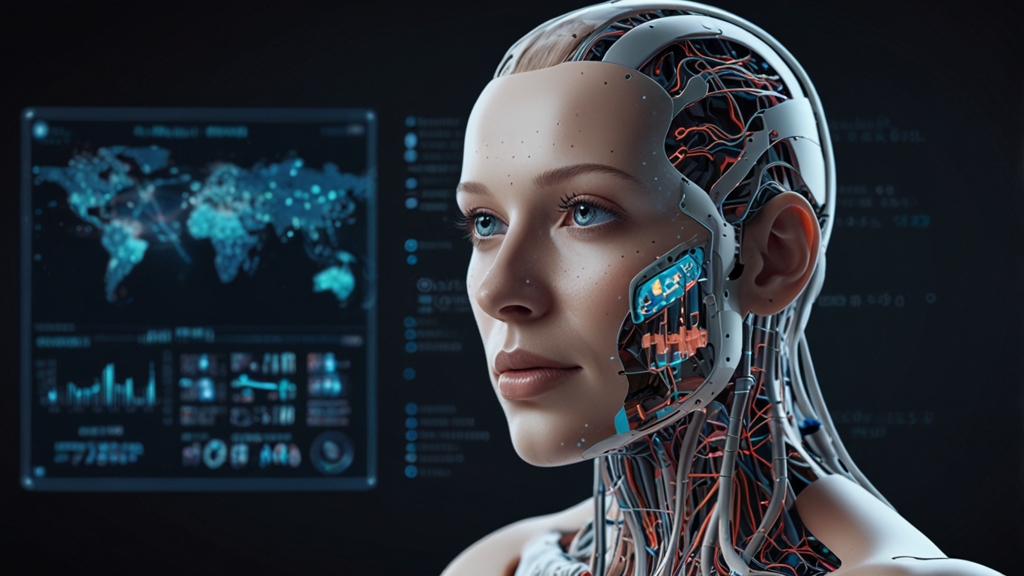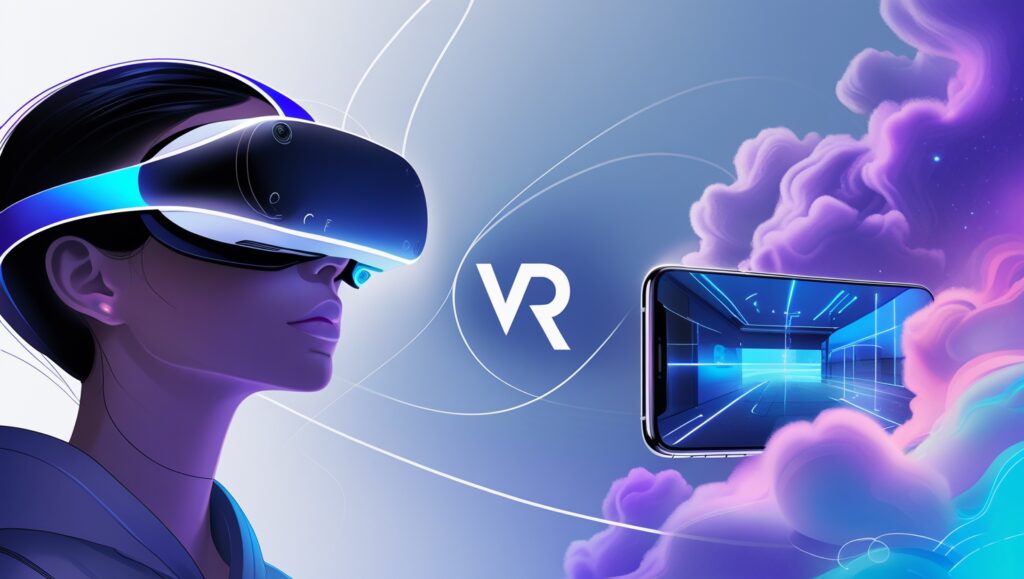Augmented Reality: Transforming Experiences with Revolutionary Innovations
AR is not a thing of the future anymore. Be it in retail or upping the ante in furthering game-playing experiences, augmented reality has deeply seeped into the walks of life to bring on an industrial revolution, especially in consumer experiences. Welcome to the World of Augmented Reality: Applications, Benefits, Challenges, and all you need to know to ride AR to dominance in digital waters.

What is Augmented Reality(AR)?
Fundamentally, AR is basically the technology that overlays images, sounds, or other data on top of what the real world is. It enables the user and enhances more interactivity right onto your real world-the basic infrastructure of devices behind this, of course, being an AR smartphone, tablets, or headsets/eyeglasses. Other than Virtual Reality, which has completely digital set environmental immersion-on the one hand, Virtual Reality utterly replaces the world with information, while augmented reality increases the physical and tangible interactions by adding digitally enhanced elements.
Key components of AR include:
- Hardware: Devices like AR glass, smartphone, or Tablet.
- Software: AR applications and platforms enable interaction.
- Sensors and Cameras: Capture the environment and enable digital overlay.
- AR Content: Virtual objects, animations, or data visualizations.

Applications of Augmented Reality
AR technology has extended its reach to various sectors by creating unique and immersive experiences:
- 1. Gaming and Entertainment
AR gaming took user experiences further by merging real-world surroundings with virtual elements. Pokémon GO gave the world a glimpse into what AR could do with regard to gaming, in which virtual characters were perceived to interact with real-life locations.
Entertainment industries use it in the form of interactive movie posters and AR-based storytelling that enhances user engagement. - 2. Retail and E-commerce
The role of AR in the retail industry has been revolutionary by offering a virtual try-on solution where consumers can try clothes, shoes, or makeup virtually before purchasing it.
Companies like IKEA have AR apps to help consumers see how certain furniture might look in their homes. - 3. Healthcare
- AR helps in learning medical education by simulating surrogate surgeries or explorations regarding anatomy by students.
Surgeons employ overlays during operations to access critical information, without diverting attention from the patient.
- 4. Education
AR has transformed education through interactive learning. Examples include bringing historical events alive or giving a three-dimensional view of complex scientific conceptions using AR apps.
AR-powered virtual field trips are enabling students to visit places beyond their classrooms. - 5. Real Estate and Architecture
Real estate agents and architects are able to make use of augmented reality to showcase the properties virtually or present 3D models of the building to customers.
- AR simplifies visualization, thus allowing possible buyers to perceive how the properties would look when furnished or renovated.
- 6. Travel and Tourism
- AR-enabled applications make traveling quite convenient by giving historical information about places, translation, and acting like an interactive guide to landmarks.
- AR is used in museums to make exhibits more interactive by adding interesting stories and special effects.
- 7. Manufacturing and Maintenance
- AR facilitates complex assembly or repair processes in different industries by overlaying instructions or diagrams for workers.
- Companies use AR for remote support, reducing downtime and improving efficiency.
Benefits of Augmented Reality

AR offers several advantages to drive it in industry segments:
- Enhanced User Experience: AR offers something immersive, keeping the user engaged.
- Increased Efficiency: In fields like manufacturing and healthcare, AR provides real-time data and guidance, reducing errors and saving time.
- Cost Savings: AR ensures minimum returns or on-site support costs by enabling virtual try-ons and remote assistance.
- Personalization: With AR, businesses can offer more personalized experiences like recommendations on the best product mix for customers.
- Innovation and Branding: Those using AR are perceived as being advanced and innovative, boosting their market presence.
Challenges in Implementing AR
While AR holds immense promise, it is not without challenges:
- High Development Costs: The development of such AR applications requires a considerable investment in technology and expertise.
- Hardware Limitations: Advanced augmented reality experiences mostly require high-performance devices that are not common to all users.
- Data Privacy Concerns: Most applications of AR need users’ data, hence introducing possible privacy and security issues therein.
- Technical Hurdles: Ensuring seamless AR experiences across different devices and environments can be challenging.
- Lack of Standardization: There is no standardization in standards related to AR technologies, which can result in a lack of compatibility.
Augmented Reality: The Future
The growth of the AR market is expected to be exponential because improvement in hardware, software, and connectivity drives growth. Some of the emerging trends in AR are:
- 5G Connectivity: Speeds of the internet increase to enable real-world and instant AR.
- Integration of AI: Merging AR with Artificial Intelligence will make applications smarter and more adaptive.
- AR Wearables: inexpensive, lightweight AR eyewear will replace the smartphone by interacting with augmented reality in real life.
- AR in Metaverse: AR is bound to be a game changer in building the metaverse, integrating virtual and physical worlds.
How Businesses Can Use AR to Grow
1. Leverage AR Marketing: Make use of AR for gamified ads and immersive product demos.
2. AR Application Development : Development of applications to provide value for a user either by simplifying his life or entertaining.
3. Training and Development : AR based modules for enhancement in the training of skills of employees.
4. Enhanced Customer Support: The use of AR in remote troubleshooting and product setup.
Conclusion
Augmented reality is going to change the way we interact with both the digital and the physical world. Enhancing experiences, solving real-life problems, driving innovation, augmented reality has turned out to be of paramount importance for businesses and consumers gradually. As technology keeps evolving, AR is set to form a bedrock for the digital economy, with limitless possibilities for one who’s prepared to get on board with it. Only with a properly laid foundation through investment in today’s AR technology will the business firm outcompete others, offering unrivaled experiences and new ways to pursue growth. For consumers, AR foreshadows the future as the line separating reality from fantasy diminishes into the world of endless possibility. — Embrace the power of Augmented Reality where the future meets the present so marvelously.
Also See: Virtual Reality









